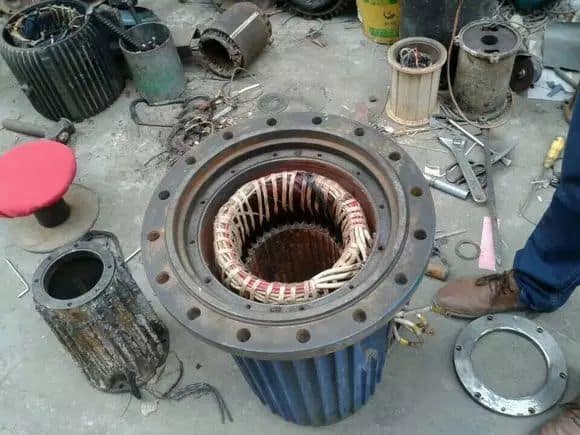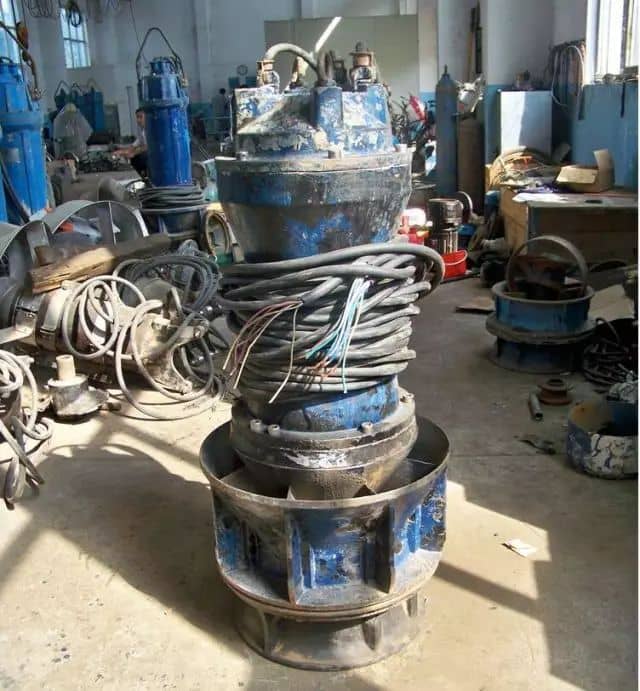Troubleshooting and Solutions for Pump Failure to Discharge Water
The reason why the pump failure to discharge water is analyzed as follows:
1.There is air in the water inlet pipe and pump
1) The pump is not filled with enough water before starting, sometimes it seems that the water has been flooded from the vent hole, but the pump shaft is not rotated
The gas is completely discharged, resulting in a little air remaining in the intake pipe or pump body.
2) The horizontal section of the water inlet pipe in contact with the water pump should have a downward slope of more than 0.5% in the direction of the reverse flow, and connect the water pump inlet
One end is the highest, not completely level. If it is tilted upward, the intake pipe will retain air, reducing the water pipe and pump
The vacuum degree affects water absorption.
3) The packing of the pump has been worn or the packing is too loose due to long-term use, resulting in a large amount of water from the packing and the shaft sleeve of the pump
The result is that the outside air enters the inside of the pump from these gaps, affecting the water lifting.
4) Water inlet pipe due to long-term potential underwater, pipe wall corrosion holes, water surface continuously drops after the pump work, when these holes
After the surface of the water, air enters the civil water pipe through the hole.
5) Cracks appear at the bend of the inlet pipe, and small gaps appear at the connection between the inlet pipe and the pump, which may cause air to enter
Water inlet pipe.

2.The pump speed is low
1) Human factors. Some users due to the damage of the original motor, it is free to match another motor to drive, resulting in
The consequences of small flow, low head and even no water.
2) Mechanical failure of the pump itself. The fastening nut between the impeller and the pump shaft is loose or the pump shaft is deformed and bent, causing the impeller to move more and more straight
Friction with the pump body, or bearing damage, may reduce the speed of the pump.
3) Engine maintenance is not good. The motor loses magnetism because the winding is burned out, and the number of turns, wire diameter and connection method of the winding are under maintenance
Change, or maintenance failure is not completely eliminated factors will also make the pump speed change.
3.The suction range of the pump is too large
Some water sources are deeper, some water sources are relatively flat, ignoring the allowable suction range of the pump, resulting in less water absorption
Or no water at all. It is necessary to know that the vacuum degree that can be established at the suction port of the self-priming centrifugal pump is limited, absolutely
The suction range of the vacuum is about 10 meters water column height, and the pump cannot establish an absolute vacuum.
And the vacuum is too large, easy to make the water in the pump gasification, unfavorable to the work of the pump. Therefore, each centrifugal pump has its maximum tolerance
Suction, generally between 3-8.5 meters. The installation of the pump must not be simple and convenient.
4.The resistance loss in the water inlet and outlet pipes is too large
Some users have measured that although the vertical distance from the reservoir or water tower to the water source is slightly less than the pump head, it is still
The amount of water is small or no water. The reason is often that the pipeline is too long, the water pipe has many bends, and the water flow in the pipeline has too much resistance loss
Large.
The reason is often too long pipe, pipe bends, water flow in the pipe resistance loss is too large. Generally, the pipe is bent at 90 degrees
Higher than the resistance of 120 degrees bending pipe, the head loss of each 90 degrees bending pipe is about 0.5 to 1 meter, and the resistance of each 20 meters pipe can make the head loss
Lost about one meter. In addition, some users also arbitrarily pump into and out of the pipe diameter, which also has a certain impact on the head.
5.Influence of other factors
1) The bottom valve cannot be opened. Usually because the pump is left for too long, the bottom valve gasket is stuck to death, and the bottom valve without gasket may be
Rust to death.
2) the bottom valve filter screen is blocked; Or bottom valve potential water sludge layer caused by the screen blockage.
3) The impeller is seriously worn. The impeller blade is worn after long-term use, which affects the performance of the pump.
4) The failure or blockage of the gate valve check valve will cause the flow rate to decrease or even no water to be pumped.
5) Leakage of the outlet pipeline will also affect the amount of water extracted.
Water pump common failure and troubleshooting method?
Fault 1. Low water output after starting the pump.Cause analysis and elimination method:
- The suction pipe is not tight and the air is inlet, and the water shows milky white bubbles
Troubleshooting method: Check the suction pipe and plug the leak - The water pump does not rotate in the right direction
Elimination method: Change the motor power wiring, and replace any two of the three wires before starting. - The valve is not open enough
Troubleshooting method: Check the valve switch position, find out the cause after all open the valve. - The pump speed is insufficient
Elimination method: Check whether the power supply voltage is too low; The speed regulating pump should increase the speed and increase the discharge head. - Insufficient pump lift
Elimination method: the machine pump with higher lift should be replaced - The flow meter is faulty
Elimination method: re-calibration flow or repair, replacement. - The suction pipe or impeller channel is blocked by foreign bodies
Elimination method: After judging and excluding other possible causes, the machine can be stopped for disintegration inspection.

Fault 2. Pump vibration, loud noise.Cause analysis and elimination method:
- The anchor bolts for the motor and water pump are loose
Troubleshooting method: readjust and tighten loose bolts. - Pump, motor different heart
Elimination method: readjust the concentricity of the pump and motor. - More serious cavitation of the pump
Elimination method: Reduce the water output, or raise the suction pool or suction well water level, reduce the suction vacuum height, or replace the suction pump with a higher vacuum degree. - Bearing damage
Elimination method: Replace the new bearing. - Pump shaft is bent or worn
Elimination method: repair the pump shaft or replace the new bearing. - Unbalanced pump impeller or motor rotor
Elimination method: disintegration inspection, if necessary, static and dynamic imbalance test, this work can only be carried out when other reasons are excluded. - Pump into the debris
Troubleshooting method: Open the pump cover to check and clear the blockage. - The bolt or rubber column inside the coupling is worn or damaged
Elimination method: Check the inner column of the coupling and repair or replace it if necessary. - The flow is too large or too small, far from the allowable working point of the pump
Elimination method: adjust the control water output or update the equipment to meet the needs of the actual working conditions.
Fault 3: bearing overheating.Cause analysis and elimination method:
- The sliding bearing oil ring rotates slowly with less oil or low oil level without oil
Elimination method: check the oil level, observe the oil ring transmission speed, trim or replace the oil ring. - The tank cooling water supply is insufficient
Elimination method: Check the cooling water pipe and the joint door, and the blockage should be removed. - Water in the oil tank destroys the lubricating oil film
Elimination method: Check the cooling water pipe in the oil tank and the sealing of the oil tank, solve the leak and replace the new oil. - Lubricating oil grade does not meet the original design requirements or the oil is dirty
Elimination method: Use lubricating oil according to the requirements of the instructions, check the oil quality regularly, use the same brand of lubricating oil when adding oil, and periodically replace new oil. - The shaft and the inner seat ring of the rolling bearing become loose and produce friction
Elimination method: repair shaft diameter or replace new pump shaft and bearing.
Learn more our project quality managemet, QAQC and third party inspection (TPI), NDT practices thru below link.
https://www.jsc-safe.com/steel-structures-modules-machining/
